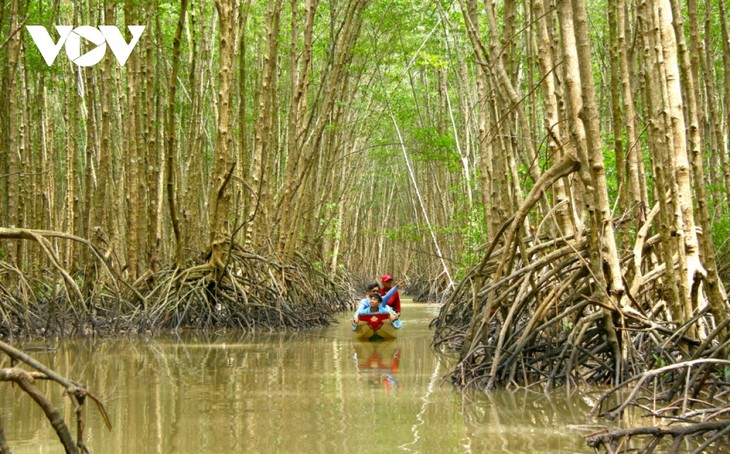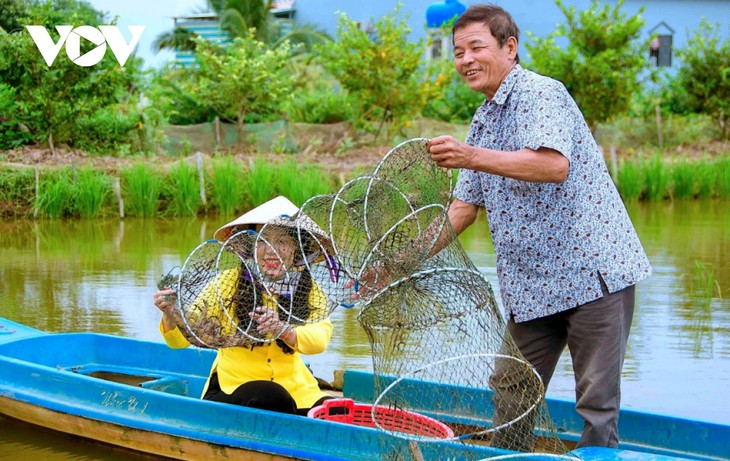(VOVWORLD) - The southernmost province of Ca Mau has approximately 140,000 hectares of forest which is protected, regenerated, and developed through sustainable forest models.
 People in Ngoc Hien district protect the mangrove forest for ecotourism development. People in Ngoc Hien district protect the mangrove forest for ecotourism development. |
From Ca Mau city down National Highway 1A to the southernmost district of Ngoc Hien, there are canopies of mangrove on either side of the road, maintained to serve community ecotourism.
The Hoang Hon (Sunset) community tourism site in Dat Mui commune has cooperated with landowners to let tourists plant mangrove trees and attach their name to signboards. Each month the Sunset staff take photos of the trees to track their growth.
Nguyen Trung Kien, Sunset’s manager in charge of afforestation tourism products, said, “Local landowners have worked with us to build tourism products. Now every household and person is doing tourism. We are helping them create even more community tourism attractions to improve their lives.”
Nguyen Minh Dua, a local farmer doing community tourism, said they know that visitors like pristine places. “They come here because of the trees.”
 The shrimp-forest farming model turns out high quality and profitable shrimp products. The shrimp-forest farming model turns out high quality and profitable shrimp products. |
Shrimp farming has also helped farmers increase their income and better understand the value of forest protection.
Ngoc Hien district has 57,000 hectares of shrimp-forest farming, including 21,000 hectares with international quality certificates.
Tran Hoang Lac, Chairman of the district People's Committee, told VOV that to help farmers do shrimp-forest farming with high productivity and quality, local authorities have compiled a farming techniques manual.
“Acacia trees produce a high yield and a quicker harvest and sell more easily, while growing cajeput is much slower,” Nguyen Van Ten of Tran Van Thoi district, said.
Ca Mau province is taking steps toward a carbon market to give forest growers more income. According to Tran Van Thuc, Deputy Director of the provincial Department of Agriculture and Rural Development, the carbon absorption of mangrove forests is 3 to 4 times higher than other forests, making the proceeds from local forest carbon credits higher.
“Ca Mau province has allowed domestic and foreign organizations and businesses to learn the local carbon markets so that when the Government creates a legal corridor, we can quickly grasp the opportunity to implement it,” Thuc noted.
Ca Mau is preserving and developing its forests with comprehensive forest-based economic models to increase incomes and create a sustainable forest economy.